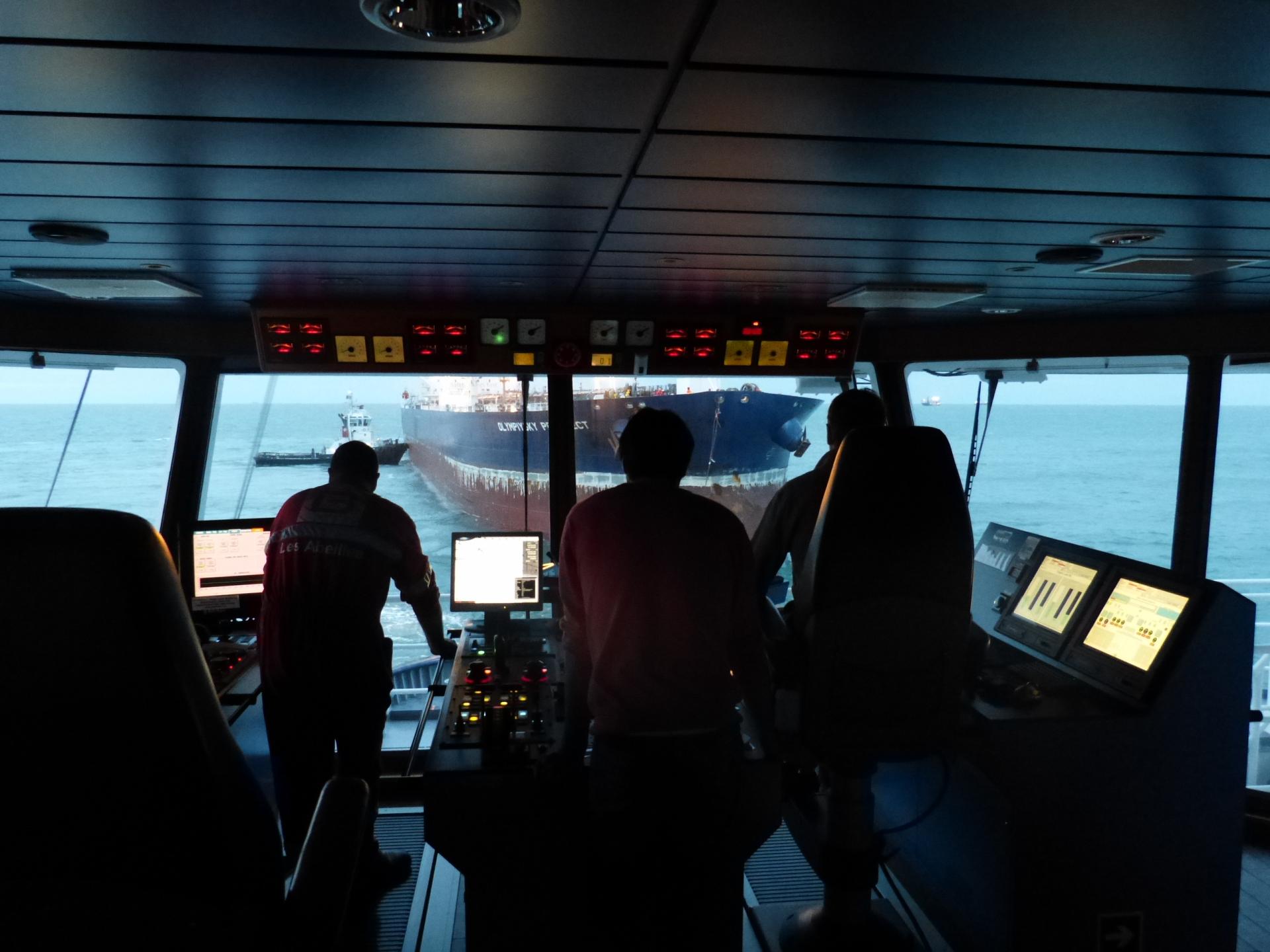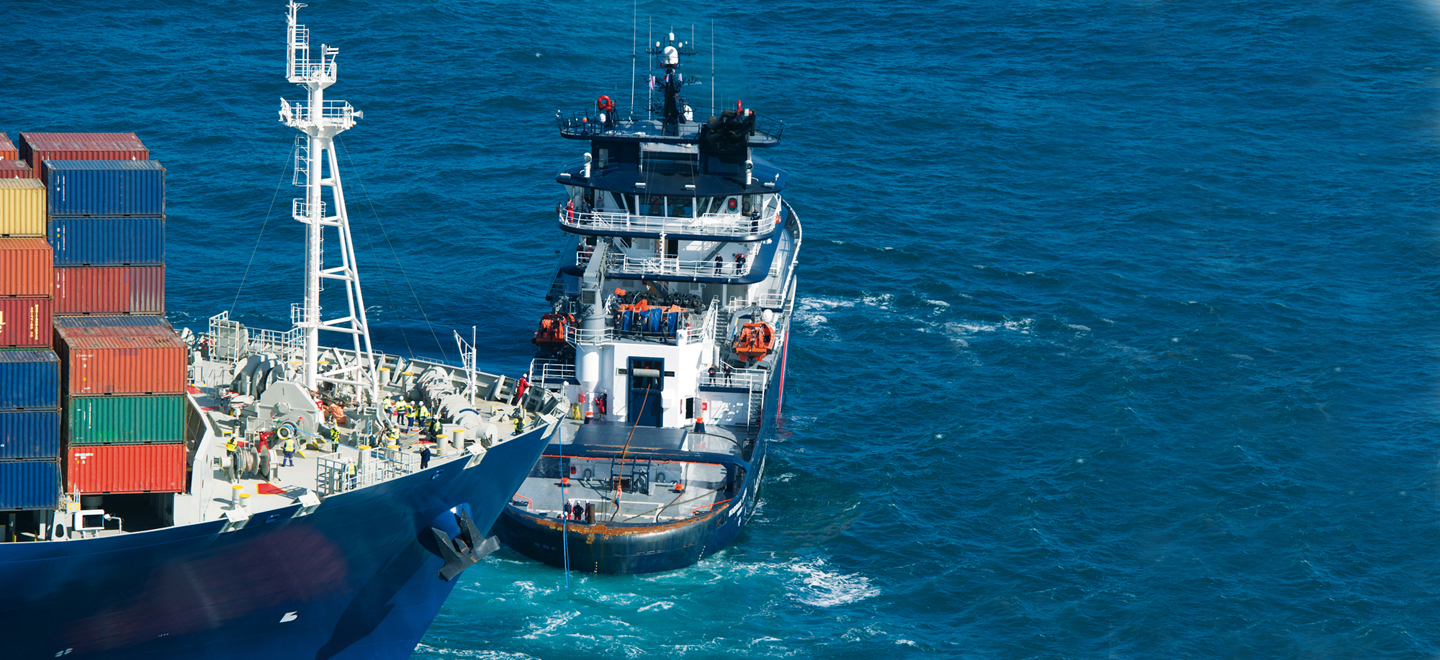
The Abeille Liberté assists a damaged oil tanker
Coming out of Le Havre on the evening of December 8, 2014, the Russian oil tanker Olympiysky Prospect, measuring 250 m long and with a deadweight of 114,000 t, suffered serious rudder damage. Contacted directly by the shipowner, the head of operations for the company Les Abeilles informed the Master of the Abeille Liberté which got underway 20 minutes later after receiving approval from the French Operational Centre of the Navy (COM).
December 8, 2014, 23:00 - Departure from Cherbourg military port
The Abeille Liberté comes in sight of the stricken vessel in the very early morning. It is nighttime on the English Channel and the Olympiysky Prospect is still all lit up by its deck lights. The weather in the area is mild. The Russian oil tanker gently raises her anchor chain in order to get under tow. On board the response, assistance, and salvage tug (RIAS), everyone was at their station, ready to intervene.
December 9, 2014, 09:00 - Towline connection
On the aft deck, the seafarers are busy. Their role is to prepare the rigging. The boatswain coordinates these deck operations and launching the tug's rescue boat. The rescue boat, manned by one seaman and one engineer, will bring the first mate on board the tanker. His mission: helping the Russian crew connect the towline, advising the captain, and serving as a liaison with the bridge of the RIAS. At the helm is the Master of the Abeille Liberté, Philippe Le Bihan. His goal: to come along and remain close to the tanker, to facilitate connecting the towline.
This stage of the operation is delicate, due to the proximity of the two vessels. Now, the towing bridle must be connected to the tanker's emergency tow chain. This chain is 10 m long. Each of its links weighs 30 kg. It is attached to the vessel's forecastle using an "AKD" chain stopper, tested to 250 t. At each step, all stakeholders will be kept informed of the operations conducted by the onboard personnel: the Les Abeilles operational management, the French Navy's operational center in Cherbourg, and the Jobourg CROSS center (Regional Operating Centers for Monitoring and Rescue) which regulates traffic in the area.
December 9, 2014, 10:00 - Towing under way
The favorable weather conditions and the experience of our teams helped to successfully get the anchor under tow without an incident. Around 10:00 a.m., the 500 m convoy then heads due south at 7 knots, to the port of Le Havre. Aboard the RIAS, the disconnection operations are prepared ahead of arrival. The towing speed and towline length are reduced on the approach to Le Havre because of the shallower waters. Everything is in place to avoid breaking the towing bridle and ensure optimum safety conditions for the operation.
"At this stage of the operation, the crew must stay focused in order to properly remain in the tanker's axis, in this very busy area."Cyrille PilletFirst mate
December 9, 2014, 16:00 - Arrival in Le Havre
The Abeille Liberté arrives at the entrance of Le Havre Channel, 4 harbor tugs then come into action and 2 harbor pilots are brought on board the tanker by helicopter. They will coordinate maneuvers throughout the disconnection operations. Aboard the RIAS, everyone remains vigilant, the chief engineer and his second at the winch, the captain at the helm, the lieutenant monitors navigation, the surroundings, and communications from the bridge.
December 9, 2014, 18:00 - End of mission
The BOURBON crew members sent aboard the Russian tanker are back. The Abeille Liberté takes off for its home port of Cherbourg. Under the command of the French Navy, the RIAS will reposition itself on standby in this area where over 250 commercial vessels pass through each day.

Les Abeilles has been protecting 3,120 km of French coastline with 5 assistance, salvage and pollution remediation tugs and 3 support vessels.
Read more


